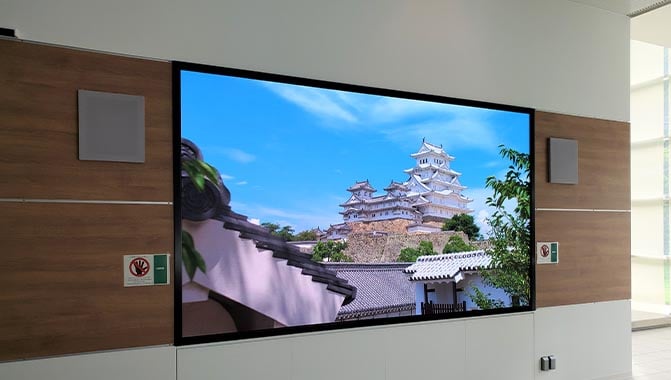Examining the Wide-ranging Integration Options Offered for LED Wall Modules
Examining the Wide-ranging Integration Options Offered for LED Wall Modules
Blog Article
Light Emitting Diode display panels have gained popularity for their capacity to deliver crisp visuals in various settings, from professional environments to entertainment venues. One of the most significant aspects of these systems is their interface capabilities, which allow users to connect them to multiple devices and systems. Comprehending the broad connectivity options available for LED wall panels is vital for enhancing their use and effectiveness. This article details these features, showcasing how they can adapt to specific needs and preferences.
One common interface approach for Light Emitting Diode wall panels is HDMI. High-Definition Multimedia Interface is broadly recognized for delivering crisp video and audio signals between devices. This interface type is especially useful in commercial settings, such as meeting spaces or classrooms, where visual content or video content are often displayed. By using HDMI cables, operators can seamlessly link laptops, projectors, and streaming devices to Light Emitting Diode wall panels, ensuring a sharp and dynamic display of information.
Another popular interface method is DisplayPort, which is similar to High-Definition Multimedia Interface but offers enhanced advantages. DisplayPort can support elevated refresh rates and display outputs, making it an ideal choice for gaming or design-heavy applications. For those deploying LED wall panels in environments where output quality is essential, such as competitive gaming venues or design studios, DisplayPort can provide the required visual quality. Additionally, many modern computers and graphics cards feature Display Port connections, making it a convenient option for technology-oriented professionals.
In contrast to HDMI and DisplayPort, cordless transmission methods are becoming increasingly prevalent in LED wall panel solutions. Cable-free interfaces allow users to transmit content without the need for physical cables, enabling thin led wall panel light a streamlined and more adaptable configuration. Technologies such as wireless internet and short-range communication enable users to link smartphones, tablets, and laptops seamlessly to LED wall panels without cumbersome wires. This convenience is particularly advantageous in fast-paced settings like exhibitions or events, where rapid changes to displays are often required.
For extensive deployments or more intricate setups, network connectivity through Ethernet is another viable option. Wired links provide a consistent and robust way to integrate multiple LED wall panels within a network. This approach is suitable for electronic display use cases found in retail centers or transport hubs, where numerous panels may need to display synchronized content across a broad area. By using network cabling and routing hardware, operators can guarantee that all connected panels receive uniform data and information seamlessly.
Lastly, it's important to consider the future of connectivity with technologies such as USB-C and Thunderbolt 3. These next-generation interfaces offer enhanced data transfer rates and flexibility by allowing one connector to handle both energy transfer and data exchange. As more systems incorporate these protocols, Light Emitting Diode wall panels equipped with USB-C ports will likely become more prevalent. This shift in integration not only enhances the capabilities of Luminescent Diode wall panels but also coincides with the emerging trend of minimalistic design in hardware arrangements by minimizing the number of wires required.
In summary, examining the broad connectivity options available for LED wall panels reveals many possibilities for users across various fields. From traditional methods like High-Definition Multimedia Interface and Display Port to contemporary cordless technologies and LAN More Info setups, each pathway serves specific purposes tailored to specific needs. Furthermore, next-gen technologies like Universal Serial Bus-C offer further developments in how users interact with LED wall panels. By understanding these connectivity alternatives, end-users can make strategic selections that enhance their overall experience with these versatile display tools.